Policy Obstacles to Rooftop Solar Build-out
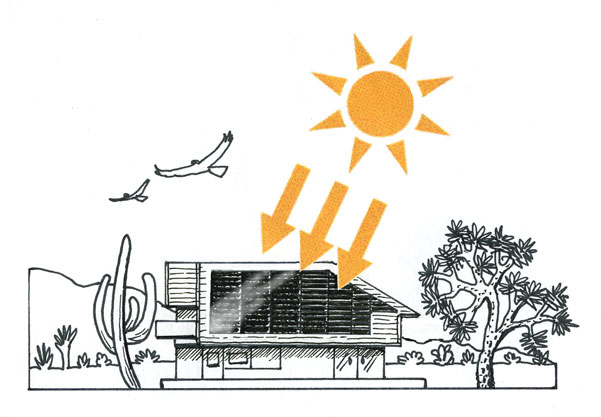
June 26, 2016 - Laura Cunningham
Basin & Range Watch for several years has tried to promote renewable energy alternatives to utility-scale solar and wind projects that are being constructed on desert ecosystems, better alternatives such as rooftop solar and distributed smaller projects like solar parking lot canopies and commercial building solar arrays. The technology is there, microgrids have modernized, exciting new developments in battery storage are on the market, and homeowners and businesses are lining up. So why are we not seeing urban areas covered to the maximum with rooftop solar? Time and time again we are seeing policy obstacles that inhibit rooftop solar incentives for homeowners, while utilities continue to receive solar tax credits, ratepayer-subsidized capital campaigns to build long transmission lines, and the huge benefit of inexpensive leases on public lands to develop large-scale solar projects. We believe rooftop solar policy should be more supportive of homeowners who want to invest in solar.
Below we summarize the state of one such solar policy, net energy metering, that has erupted into controversy in Nevada. We have followed this case closely, as well as writing comment letters to the Public Utilities Commission of Nevada (PUCN), and attended several hearings on the subject (as well as protests).
Such controversy has rippled across other states as well, as the question of utility vs distributed renewable energy continues to be debated. The Federal Trade Commission recently became involved in trying to sort it all out, by asking for comments and holding a workshop on such questions as the costs and benefits of solar. We place the FTC notice at the end of this article, and make our own comments.
Controversies Over Net Energy Metering
Net energy metering (NEM) is a policy to support residential rooftop solar systems connected to the grid. The policy is a good incentive in our opinion to help encourage homeowners to install a rooftop solar array by guaranteeing a predictable pay-back over several years in a contract with a utility. This saves the utility the up-front cost of building more power plants by having a distributed "virtual power plant" spread out over many small generators who pay the costs of installing the solar panels, often through a solar leasing company.
Questions have arisen about these contracts, how much the residential generators understand these contracts, how much solar leasing companies tell the customers the details, and how much the utilities are motivated to keep their business model intact. We see this controversy partly as a tug-of-war between traditional corporate centralized utility generation models and new distributed energy generation trends (often called "energy democracy").
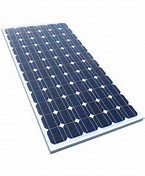
What Is Net Energy Metering?
Homeowners agree to a billing arrangement that provides credit to rooftop solar generators. The meter keeps track of how much electricity is self-generated by the generator's rooftop photovoltaic array, and how much is offset as excess electricity which goes back on the grid. Generators pay only for the net amount of electricity used from the utility, and generators receive credits for the excess electricity their rooftops generate. The utility immediately takes the customer’s excess generation and sells it to other customer at its retail rates.
Systems are 1 megawatt or less.
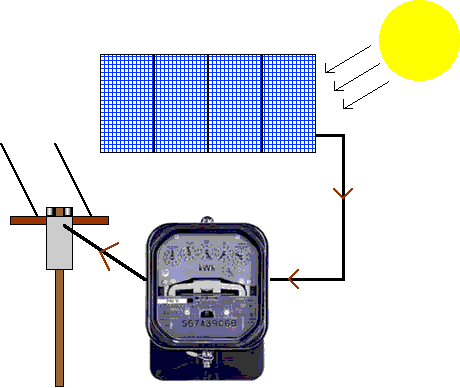
History in Nevada
1997 - Nevada legislation enacts NEM, requires NV Energy to provide NEM until a 3% cap is reached.
2014 – The cost of photovoltaic solar plummets globally.
February 2015 – The rooftop solar leasing company Solar City opens in Las Vegas and Reno in April, a sign of increased demand for rooftop solar in the Silver State.
May 2015 -- Nevada jumps from the 14th-largest residential solar market in 2014 to second in the US in 2015, reaching the 235 MW cap sooner than expected in August. Nevada Senate Bill 374 was passed and signed, which gives the Public Utilities Commission authority to establish solar metering rates, set potential interconnection fees, and reconsider the state's 3% solar cap -- instead of state legislators. Questions arise as to how much influence uiltities have with the PUC.

Controversy Erupts
Debate began as the cap was reached -- “NEM1” (the original policy version with the 3% cap) was set at the retail rate of electricity, and SB 374 directs regulators to establish “NEM2” tariffs to address the remuneration debate now occurring between the utility and solar installers. The Nevada PUC devised a stopgap measure to extend the retail net metering rate but only until the end of 2015.
NV Energy petitioned the PUCN for new fees on rooftop solar and retroactive fees. This was highly controversial, older NEM1 generators were not grandfathered in unlike many other states with similar polices, thus making Nevada one of the more extreme in its solar rooftop incentive cuts.
December 22, 2015 – the PUCN sides in favor of NV Energy.
17,255 rooftop solar NEM homeowners in Nevada were impacted by this decision.
What the Nevada Public Utilities Commission Decision Means
^Commissioner Alaina Burtenshaw of the PUCN hears public comments in Las Vegas at a contentious meeting.
Nevada was the only state to retroactively apply new fees to existing NEM customers (no grandfathering, which other states decided to allow).
The monthly fixed service charge for NEM generators will rise hugely: from $12.75/month in 2015 to $17.90/month in 2016 and then $38.51/month by January 1, 2020 in southern Nevada, $44.43 in northern Nevada. Non-solar customers will continue to pay the $12.75 monthly fixed charge.
Reduced compensation for rooftop generation will be enacted (lower per kiloWatt hour credit for excess generation): the current credit of ~11 cents per kWhr would be reduced to about 9 cents in 2016, declining to 2.6 cents by January 1, 2020.
The new rule will allow customers to use an optional time of use rate structure.
^Public participation at a PUCN meeting in Las Vegas over net metering. The room was filled to capacity and a second room with video monitor was set up.
Popular Protests

Huge protests by members of the public and solar leasing compan workers ensued over these rate increases, new fees, and decreased remuneration for solar rooftop generation. We were there for the noisy crowds chanting "Bring Back Solar Jobs." Residential homeowners were present asking for clarification on rooftop solar policies. Realtors I talked to said this was a blow to an already injured housing market in Las Vegas, how would already-existing rooftop solar arrays be assessed now when a house was resold? The uncertainty might hurt housing sales. Everyone wanted answers and clarification.
I talked with a local high school teacher who brought her science class to the PUC meeting to make public comments on the value of rooftop solar for mitigating climate change. They said the reduction of CO2 emissions from increased rooftop solar was important to them as young people to provide for a better future.
Events After the Protests
December 24, 2015 -- The Nevada Bureau of Consumer Protection filed a motion for stay, as well as the Southern Nevada Home Builders Association soon after.
The leasing companies Solar City, SunRun, Vivant exited or reduced operations in Nevada, cutting ~600 to 1,500 jobs.
January 12, 2016 – Solar customers launched a class action lawsuit against NV Energy challenging the ruling on the grounds of the contracts clause of the Constitution.
January 13, 2016 -- The PUCN rejected all requests to stay the order, so the new rates will go ahead.
Petitions were filed for hearings by groups formed to support NEM. NV Energy, in a surprise move, petitioned regulators to re-instate a grandfathering provision (perhaps realizing how controversial this was nationally).
Second PUCN Hearing
February 12, 2016 – The PUCN unanimously voted to keep higher rates and not grandfather in existing customers. New rate hikes taking effect were extended from 4 years to 12 years (in a small conciliatory move to existing rooftop solar generators).
By June 2016 pro-NEM solar alliances turned in 115,000 signatures to qualify a measure for the November ballot that would overrule the PUCN decision. Solar leasing companies contributed. According to the Las Vegas Review-Journal the signatures turned in were more than twice what is needed to qualify a ballot measure for the November general election ballot. But first the solar coalition has to win its appeal to the Nevada Supreme Court from a Carson City District Court ruling that found the proposal did not qualify as a referendum.

Utilities Use Cost Shift Argument
Utilities have been asking for fee increases for NEM generators arguing that those who have rooftop solar arrays are subsidized by homeowners who do not have solar arrays. But a study conducted for the PUCN by Energy + Environmental Economics (E3) reported to the PUCN in 2014 there were no significant costs going forward into 2016 to nonparticipating ratepayers from homeowners who install a rooftop solar system (on the order of $0.01/kWh). The rooftop solar systems may actually reduce costs, benefiting all ratepayers.
The PUCN claimed this study is out of date. The Nevada Bureau of Consumer Protections said that the numbers need to be vetted, that more time is needed. The rooftop solar industry told Las Vegas journalist Jon Ralston: “Let’s have a fair redo of the study.”
In June 2016 the Nevada Board of Examiners approved contracting for an updated NEM cost-benefit analysis by E3, although Commissioners at the PUCN commented that this would likely not change their decision. Questions of fairness, impartiality, and objectivity remain concerning the PUC decision. With a third party study by E3 pending, there is a possibility the decision-making about fees and prices for rooftop solar will have to go back to the legislature to be hammered out.

Two different business models are at odds with each other in the NEM controversy -- the central utility model such as used by NV Energy (recently bought by Warrens Buffett's Berkshire Hathaway), and the solar leasing/electric car/advanced home battery model developed by Tesla and Solar City (started by technology entrepreneur Elon Musk). Which model should be incentivised more? Do public utility commissions tend to favor one model over the other? Which model would benefit society more towards modernizing the energy generation and distribution system? Which model would most quickly lead to decarbonization of energy use?
Benefits of Rooftop Solar

What is less discussed, especially by utilities, are the numerous benefits that distributed solar systems on rooftops can provide to everyone on the grid.
For example, rooftop solar can reduce grid congestion and increase reliability. Aggregated Distributed Energy Resources (DER) can provide grid services such as dynamic capacity and peak shaving, flexible ramping, frequency regulation, voltage and reactive power support, and more. DER can offer increased reliability and resiliency by deploying energy storage to provide backup power during routine outages.
In late June 2016, power outages were planned by SCE in southern California during a heat wave and 16,000 customers had their electricity shut off after work and all night until 6 am. Some customers said they received advanced notice, others said they did not. Remote utility-scale solar projects such as Stateline Solar Project (PV) and Ivanpah Solar Electric Generating System (CSP) were apparently not enough to stave off these "routine" power outages to the Los Angeles area. But having a large distributed network of solar arrays on rooftops, parking lot shade canopies, and commercial buildings could potentially offer a reduction in peak use, especially if combined with distributed energy storage batteries. Peak use of electricity has shifted into the late afternoon hours and early evening time, and a PV-battery combination could help to shave off this peak extreme usage that tests the usual central-station power plant portfolio of the utilities in large population urban areas. NEM is the type of policy that should encourage increased DER build out to benefit grid peak usage. Hindering rooftop solar incentives is going backwards to modernize the grid.
Rooftop solar also reduces the need for costly new transmission projects (which are paid for by utility rate increases to all customers), with associated loss of electricity on the lines. Large-scale solar PV projects are often hundreds of miles distant from load centers, and even though prices of electricity sold to the utility may be slightly less because of economies of scale of the projects, the inefficient loss of electricity on the lines across the state, and capital needed to construct these large transmission lines should all be factored into any comparison of cost shift. The cost of new and upgraded large 500 kiloVolt transmission lines stretching across deserts to the urban coastal cities in California from remote utility-scale solar and wind projects should be considered as a burden ratepayers would not have to pay if more homeowners subscribed to NEM programs. Are NEM solar rooftop generators receiving a double grid interconnection and maintenance fee unfairly, since they already pay for transmission upgrades? Utilities can defer some distribution upgrades as more local residences switch to rooftop solar.
Rooftop solar and DER reduce the need for construction of more natural gas power plants, especially peaker plants (which can cost $900 million) and likely only needed for a few months of year. Under NEM, homeowners buy the solar systems themselves or through leasing companies, saving the general ratepayers money through reduced utility need for new power plants and capital campaigns.
Rooftop solar helps move utilities toward their Renewable Portfolio Standard goals without upfront cost to them (NEM counts towards the Nevada RPS; as efficiency in the California RPS).
Rooftop solar values low volume users and energy efficiency. With climate change a pressing global problem, anything we can do to lower CO2 emissions should be encouraged.
There is also a value to the net excess energy generated by NEM grid-connected solar systems which needs to be discussed much more. This excess electricity the home does not use is fed back to the grid and resold by the utility to all customers, including those without rooftop solar. What is the value of this excess energy? Should it be valued higher since it often coincides with peak usage?
Rooftop solar installer jobs have been impacted by negative changes to NEM policy in Nevada, which impacts the entire economy of the communities involved.
Avoided land use is a very important benefit of placing photovoltaic panels on rooftops in the built environment. Currently there are several utility-scale PV projects that have been built or are under construction on desert ecosystems that have had to be cleared of native plant communities and wildlife, and graded, with accompanying stormwater berm and channel earthworks, new or upgraded transmission lines and substations that fragment habitat for wildlife further. A large percentage of these solar projects are on public lands, which removes these lands from other public uses and significantly impacts resources. Many of these PV projects are 2,000 to 4,000 acres in extent. These same PV panels could be distributed on rooftops. These public lands have immense biological and cultural value and should be conserved.

^Desert Sunlight Solar Farm in Riverside County CA on Mojave/Colorado Desert ecosystem managed by the Bureau of Land Management; photovoltaic panels that can be placed on rooftops.
California NEM

California's NEM inception was in 1996.
The 5% cap on the NEM program may be reached July 2017.
1.05 Gigawatts of NEM was installed in 2015.
77,563 NEM applications were installed and in the queue at end of 2015.
California NEM Decision 2.0
On December 15, 2015 the California Public Utilities Commission (CPUC) made their decision on changes to the NEM program in that state. Rooftop solar generators would receive full retail rate credit for the energy they export back to the grid. The CPUC, in contrast to the decision in Nevada, rejected added utility demand charges and fixed fees. But an added $75-150 one-time interconnection fee would be upheld.
The decision required NEM customers to pay nonbypassable charges of $0.02-0.03 per kiloWatt-hour for electricity bought from the grid before netting out the exported electricity to the grid –- this could add up to >$5/month in fees for rooftop generators. The utilities justified these new fees by saying they would pay for grid and interconnection fees of rooftop solar systems. But what about the high value of peak use generation provided to the grid by NEM customers? Should rooftop solar generators be given credit for providing this important value to everyone?
The decision would also require NEM customers connecting in 2018 or later to start service on a time of use (TOU) rate –- higher rates would incur during peak times of usage. But again, why are rooftop solar generators not credited a higher value for their excess electricity they feed back to the grid during these crucial peak times, or the grid electricity they use less of because of rooftop solar systems?
Unlike in Nevada, existing NEM customers will be grandfathered in for the next 20 years at their former rates.
The California Office of Ratepayer Advocates supported this decision.
Trends
The new solar-plus-storage technology may be disruptive to the older utility model, and because of the net-metering cuts many people may look into advanced battery storage to pair with their solar rooftop systems to be able to store as much excess energy as possible for night use. We support this for benefits to greenhouse gas reduction and avoided land use, but in many ways it represents a loss to the grid of the benefits mentioned above.
Other Distributed Generation Policies
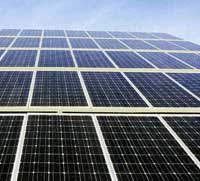
There are other good financing and incentivizing options for rooftop solar, and some counties, cities, and neighborhoods are turning to these policies while net-metering battles wage on. More about these soon.
CCAs - Community Choice Aggregators
PACE - Property Assessed Clean Energy
CEESP - California Energy Efficiency Strategic Plan
Off the Grid
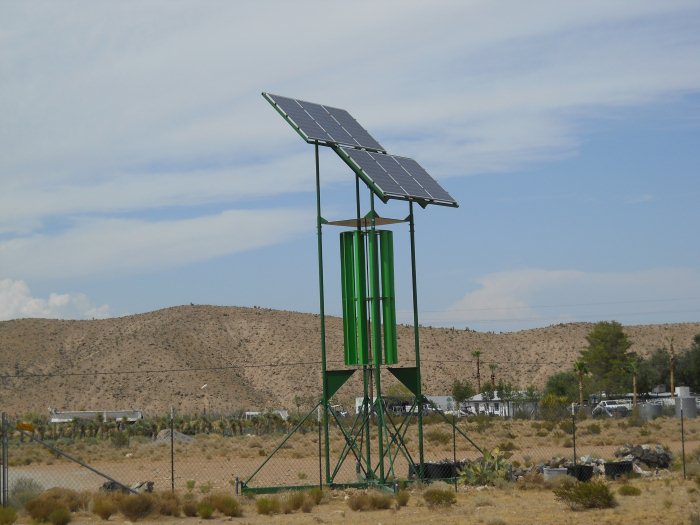
^We found this unique solar-wind off-the-grid structure in a backyard in Apple Valley CA. There are untapped methods to reduce carbon emissions and conserve wildlands.
Better Rooftop Solar Policy -- What You Can Do
--Sign petitions
--Write comments
--Keep track of PUC decisions
--Hold governors and lawmakers accountable for helping increase rooftop solar with best policies for the people

Here is the original Federal Trade Commission workshop announcement:
Something New Under the Sun: Competition and Consumer Protection Issues in Solar Power
A Federal Trade Commission Workshop
The Federal Trade Commission will hold a one-day workshop to explore competition and consumer protection issues that may arise when consumers generate their own electric power by installing solar photovoltaic (PV) panels – a practice known as solar distributed generation (DG). The workshop will discuss specific topics, including:
1) The current state of the solar power industry, and anticipated technological advancements;
2) Current regulatory approaches to compensating consumers for the power they generate, with a particular focus on net metering laws and regulations;
3) Competition among solar DG firms, between solar DG firms and regulated utilities, and between solar generation and other power generation technologies; and
4) Consumer protection issues, including how consumers get the information necessary to decide whether to install solar PV panels.
Supplementary Information below describes in more detail each of these topic areas.
Date
The workshop will take place on June 21, 2016, in the Constitution Center auditorium at 400 7th Street S.W., Washington, DC 20024.
Public Comment
The Commission invites comments from the public on the topics to be covered by this workshop. In order for a comment to be considered at the workshop, it must be submitted no later than June 7, 2016. The public comment period, however, will remain open until August 22, 2016. Comments will be posted on the workshop’s public web-page.
Interested parties may file a comment electronically at
https://ftcpublic.commentworks.com/ftc/solarworkshop.
Alternatively, paper comments may be mailed to Federal Trade Commission, Office of the Secretary, 600 Pennsylvania Avenue N.W., Suite CC-5610 (Annex B), Washington, DC 20580, or they may be delivered to Federal Trade Commission, Office of the Secretary, 400 7th Street SW, 5th Floor, Suite 5610 (Annex B), Washington, DC 20024.
Please write “Solar Electricity Project No. P161200” on your comment so that it will be readily identified with this workshop.
Contacts
For further information, please contact Derek Moore, Attorney Advisor, Office of Policy Planning, 202-326-3367, or John Seesel, Associate General Counsel for Energy, Office of the General Counsel, 202-326-2702. You may also contact us by email at solarworkshop@ftc.gov.
For additional information, visit the workshop website at https://www.ftc.gov/news- events/events-calendar/2016/06/something-new-under-sun-competition-consumer-protection- issues. Prior to the workshop, the Commission will publish a detailed agenda and other relevant information on this website.
Supplementary Information
The electric power industry is a critical sector of the American economy and affects virtually every person in the country. Unlike most other industries, the electric power industry is regulated to varying extents at the local, state, and federal levels. Retail electric utilities remain statutory monopolies to some degree in every state because elements of their operations have been viewed as natural monopolies. In general, retail electricity rates are not set by the marketplace. Rather, in most states, they are the product of ratemaking proceedings overseen by state regulators (e.g., public utility commissions (PUCs)) or local authorities.
In many jurisdictions, laws or regulations require electric power distribution utilities that sell retail electric power to residential and commercial customers to compensate customers for the power they generate from solar PV panels they have installed. Compensation can take the form of a reduction in a customer’s bill if the customer consumes more electricity than he or she generates, or a payment from the utility if the customer generates more than he or she consumes. This practice is broadly known as “net metering.”
Determining the correct rate for net metering is a complex issue. Most states that have adopted net metering have chosen to compensate solar DG customers at the retail rate the utility charges most customers for the electric power they consume from the grid. Using the retail rate is simple for residential customers to understand: the power they generate with solar PV panels receives the same price as what they pay to consume power from the grid. There is a robust debate about whether the retail rate is the appropriate rate to use in compensating customers for solar DG: some believe the correct price for solar DG is below the retail rate, whereas others believe the correct price is at (or even above) the retail rate. Determining the correct price depends upon a number of factors, including issues that are less specific to solar DG and relate more generally to the goals and function of regulated retail rate design.
Some view regulated retail rates as designed primarily to allow the utility to recover both fixed and variable costs, which helps to ensure the continuing viability of the utility. In this view, compensating solar DG customers at the retail rate allows these customers to avoid paying an appropriate share of the fixed costs of a system that was built to serve them, shifting these costs to customers who have not installed solar PV panels. Proponents of this view argue that the price utilities pay for solar DG should be closer to the (typically lower) price utilities pay for most other types of generation on the wholesale market.
Others argue that the utility should pay for customer-installed solar DG at the retail rate, because solar DG enables the utility to avoid more costs than it incurs. In their view, to the extent that peak periods of solar generation coincide with periods of high overall demand, solar DG will reduce the utility’s need to invest in generation. Moreover, some argue that by placing some of the generation closer to the point of consumption, solar DG may reduce the utility’s need to invest in transmission or distribution facilities. Thus, because solar DG results in avoided costs for the utility, the correct price for solar DG ought to reflect the value of those avoided costs. Some also suggest the government should incentivize consumers to install solar PV panels by factoring the environmental benefits of solar power into ratemaking decisions. For example, because solar-generated electric power does not create the same pollution or other externalities as carbon-based sources of electric power, compensating solar customers at or above the retail rate may be a way to achieve desirable environmental objectives.
The question of how to compensate customers for the power they generate at their properties is complicated by the fact that the retail price in most jurisdictions is set by regulation, not directly by market forces. In jurisdictions that do not use variable retail rates, the regulated retail rate at any given moment does not typically reflect the often-variable prices for wholesale electricity purchased for resale to retail customers. For this reason, customers in these areas do not typically base their electricity consumption on retail rates that fluctuate to reflect the varying wholesale price of electricity. If peak periods of solar generation coincided with periods when wholesale prices are high but retail prices remained static, then net metering at the set retail rate would not necessarily provide customers with the correct incentive to install solar PV panels. The incentive may be too large or too small depending upon the circumstances. Accordingly, the lack of accurate retail price signals can affect entry decisions by solar DG firms, which in turn affects competition in the industry.
Moreover, because retail rates often do not send customers accurate price signals, some utilities argue that retail rates need reform in addition to arguing that the net metering system needs revisions to allow utilities to recover fixed costs. On the one hand, rate reform may produce more efficient retail rates, even though a collateral effect may be a reduction in customer adoption of solar DG. On the other hand, rate reform may be a disguised effort by utilities to make solar DG less desirable relative to the status quo, thereby minimizing solar DG as a competitive threat. There also may be competitive issues if a regulated public utility is permitted to use revenues from regulated retail sales to compete directly with solar DG firms by offering to install utility- supplied PV panels to its current customers.
Solar DG and the changing regulatory environment surrounding retail electricity pricing also present significant questions of consumer protection. The cost to purchase and install solar PV panels is decreasing, although it remains a significant capital expenditure that may take years to pay off. In recent years, a number of companies, non-profits, and public utilities have sought to expand consumers’ access to home solar through various financing, leasing, or power purchase agreements. It is critical to ensure that customers have accurate information about the costs, benefits, and uncertainties associated with installing solar PV panels on their properties. One important component of this information is what customers know (or can possibly know) about
potential changes in the compensation for the solar electricity they generate as determined by regulatory and legislative decisions.
Information gained during this workshop will enrich the Commission’s knowledge about this nascent but critical sector of the economy and thus support the Commission’s advocacy and consumer education efforts. The workshop also will facilitate public discussion and comment on these issues, which may provide additional information to the many states considering how to address retail electricity rates and the consumer protection issues that can arise when consumers purchase or lease rooftop solar PV panels.
Current State of the Solar Industry
The amount of solar electricity generation has grown enormously in recent years. In this workshop, the Commission intends to explore the sources of this growth, and to facilitate a discussion regarding the anticipated evolution of the industry. The Commission invites public comment on questions relevant to this topic, including:
How much solar electricity was generated in the U.S. in 2015? How does that compare to 2005? 1995? How much solar generation can reasonably be projected for 2025?
Is the growth coming primarily from solar DG? Is growth in solar DG being driven by residential, commercial, or community installations? Are utility-scale installations of solar generation growing as well?
How does the cost of solar DG compare with the costs of other sources of generation, including utility-scale solar installations?
What are the cost components of solar DG? How fast is the cost of solar PV panels decreasing? What about installation costs? Are those costs likely to continue decreasing?
Does DG impose additional costs on the grid because of, e.g., changes in how the grid is used, integration costs, and/or overloading of local circuits? How can we calculate these additional costs?
Does DG save costs compared to other sources of generation because DG is placed more closely to the point of consumption? How can we value these cost savings?
What other benefits does solar DG provide to the grid? For example, does solar DG improve power quality, reliability, and/or resiliency? How can we value these benefits?
What are the environmental benefits and costs of solar power?
What are the subsidies for solar DG at the federal and state levels?
What other technologies (e.g., battery storage of solar-generated electricity) are relevant to the future of solar DG?
Net Metering: Pricing Solar DG at Retail
In many states, utilities that sell electric power to retail customers are required to compensate these customers for customer-generated power. In this workshop, the Commission intends to explore the various regulatory approaches to compensating customers for this power. The Commission invites public comment on questions relevant to this topic, including:
• Is net metering good policy? At the retail rate? At a different rate? 4
Does retail net metering result in cross-subsidization? For example, if the fixed costs associated with building and maintaining the electricity grid are incorporated into the price per kilowatt hour (volumetric pricing), do non-solar customers end up cross- subsidizing solar DG customers because the latter do not pay a full share of fixed costs when they choose to rely on self-generation?
Does cross-subsidization of one form or another always occur when retail rates are based only on volumetric charges and are time-invariant? Does cross-subsidization caused by net metering differ in any way from other forms of cross-subsidization inherent in regulated retail rates?
Does it make sense for PUCs to target net metering for reform, or should they focus on reforming retail rates more generally to better reflect the varying costs of supplying electric power?
Is there a way to prioritize among various reforms? Potential reforms may include a “value of solar” tariff; dual metering/net metering at something other than the retail rate; fixed charge reforms; smart meters/time-variant pricing.
Does the analysis change when the distribution utility is vertically integrated? When the utility is investor-owned, municipally-owned, or a co-op? When consumers have retail choice? When retail pricing is time-variant?
To what extent does the optimal approach depend on penetration levels for solar DG?
Should environmental externalities affect retail pricing?
Competition Issues
DG may be a competitive alternative to utility-sourced electric power for some customers. Whether consumers can benefit from this competition depends on a number of factors, including the extent to which solar DG firms face entry barriers, whether sufficient competition exists among such firms, and whether utilities can use revenues from regulated sales to offer solar DG. In this workshop, the Commission intends to explore the competitive landscape in solar DG. The Commission invites public comment on questions relevant to this topic, including:
Is solar DG a competitive threat to distribution utilities? Does this depend on whether the distribution utility owns generation assets?
How does regulation affect entry decisions by solar DG firms? What regulatory policies support or discourage entry?
Are there barriers to entry not related to regulatory policies? If so, is antitrust enforcement an appropriate tool to address them?
If regulatory policy affects entry conditions, is there a role for antitrust enforcement or competition advocacy to encourage entry? Is antitrust an appropriate tool to police efforts by utilities to maintain or strengthen regulatory barriers to entry from solar DG firms? Can such efforts by utilities be characterized as exclusionary conduct under the antitrust laws? Or is regulation the preferred tool to shape electricity distribution going forward? Are regulated distribution utilities protected from antitrust suits through any immunity or exemption? Should they be?
Should utilities be permitted to offer rate-paying customers utility-supplied solar PV panels or access to community solar installations? Does it make a difference if, instead, it is an unregulated subsidiary or affiliate of a regulated utility that is offering the solar PV panels? Are anti-discrimination rules for utility affiliates effective in achieving a
competitive landscape?
What is the state of competition among solar DG firms? Are there geographic areas
where competition is particularly lacking between solar DG firms?
What is the state of competition between solar DG firms and regulated utilities? How is
competition affected by whether the utility offers distribution service only, electricity
supply only, or both?
How is this competition affected by the fact that regulated utilities earn revenues that are
based, in part, on regulated rates of return?
How do consumer protection issues such as comparative price information or disclosures
of regulatory risk affect competition among solar DG firms and competition between solar DG firms and utilities?
Consumer Protection Issues
Until recently, the only realistic option for consumers seeking to generate solar power was to buy and install solar PV panels themselves. In recent years, solar DG has grown in part because companies have entered the marketplace to offer consumers various leasing, financing, or power purchase agreements that do not require the same up-front capital as purchasing the panels outright. A well-functioning marketplace requires that consumers have access to the information necessary to weigh the financial costs and benefits of the various options for installing solar PV panels. In this workshop, the Commission intends to explore these and other consumer protection issues in solar DG. The Commission invites public comment on questions relevant to this topic, including:
How do consumers obtain information about installing solar PV panels?
What information is most important to consumers’ decisions to install rooftop solar?
What information is available about regulated retail electricity rates? What are solar DG
firms telling consumers about expected future retail rates?
Who typically assumes the risk that regulators in a given jurisdiction will change net
metering and/or reform compensation rates paid for solar DG – consumers or solar DG
firms?
Do consumers understand the payments they will make for solar PV panels and
electricity, based on whether and how they finance or lease a system, or obtain a power purchase agreement? Do consumers understand whether their payments may escalate under some agreements?
Do consumers understand any permissions that may be needed to install rooftop solar?
Do consumers understand the implications of having rooftop solar if they sell their homes, including disclosures to prospective homebuyers? Do solar DG firms make
disclosures about how a home sale may affect the consumer’s contract for solar generation? Should they be required to make such disclosures? Do the disclosures vary depending on whether the consumer purchased or leased the solar PV panels or used a power purchase agreement, and depending on the specifics of how the consumer is compensated for the electricity he or she generates? If so, how and why?
Do consumers or solar DG firms bear the risk of structural damage to homes from solar panel installations? What is needed for clear and conspicuous disclosures about damage or loss relating to rooftop solar?
What gaps are there in information for consumers and businesses that are considering rooftop solar?
Is it standard practice for solar DG firms to retain renewable energy credits (RECs) when selling or leasing solar PV panels to consumers? Do solar DG firms make disclosures to consumers concerning the sale of RECs on a secondary market? Is information about RECs material to a consumer’s decision to install rooftop solar?
What types of disclosures are solar DG marketers or others providing to consumers? Are marketers using a standard format for such disclosures? Have standard disclosures to consumers been developed by solar DG firms or others? If so, are there any additional disclosures that would be useful to consumers?
Do solar DG marketers or others use robocalls to promote solar PV panel sales to consumers? If so, are there practices that raise issues for consumers?
